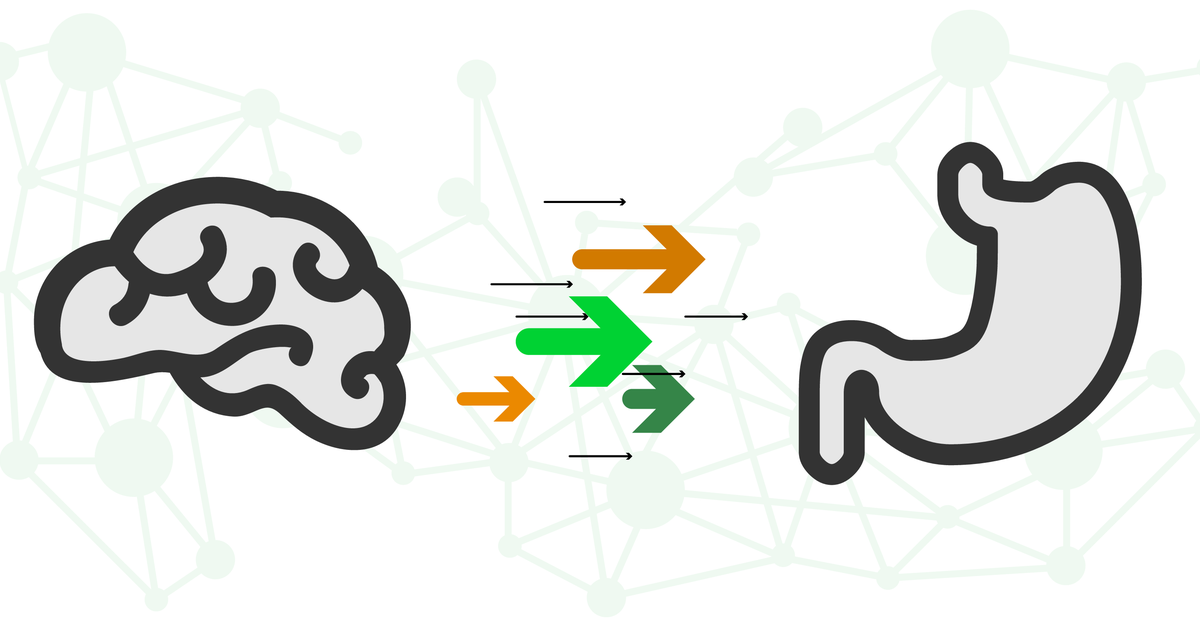“Trust your gut.”
This is the advice you’ll repeatedly hear in both the business and personal worlds. The people most likely to share this advice are the ones that got lucky “trusting their gut” or have no real stake in the matter.
You hear less often from the people who went with a gut feeling and ended up losing everything. Of course, the opposite position is that you should always rely on the data.
So, do you trust your gut, or do you rely on the data?
The reality is that you can do both, but they don’t always have to be in contradiction to one another.
Here’s how to bring more data into your decision-making process without having to abandon your gut feelings completely.
The power of gut instinct
You’ll find no shortage of stories involving business owners and decision-makers who have ignored the data and forged ahead with a scheme everyone called crazy, only to be proven right and make a fortune for their companies.
Henry Ford doubled wages for his workers during a time when he was experiencing high employee turnover. Because he was also experiencing reduced demand for his automobiles, doubters called him crazy.
With a renewed workforce and demand increased, Ford continued to grow.
When Bill Allen was the CEO of Boeing, they were exclusively making military planes. This was the 1950s, and civilian air travel wasn’t yet a large enough industry to support the types of massive jets that Boeing is now famous for.
That didn’t stop Bill from realizing the market’s potential and risking $16 million building the first Boeing airliner.
During his time at Apple, Steve Jobs was continuously creating products that nobody thought anyone wanted, only for them to go on and become game-changers in their field.
This is true from the early days of creating a home computer with Steve Wozniak, all the way through to the introduction of the first smartphone.
The perils of gut instinct
There’s no doubt that gut instinct can be a powerful thing if you’re one of the rare breeds whose gut is correct more often than not.
But, for every Henry Ford, Bill Allen, and Steve Jobs, there are endless “Gregory Browns.”
While CEO of Motorola, Gregory Brown decided that the data was wrong about mobile phones. He figured that the technology wouldn’t take off and figured that Motorola’s resources were better spent on satellite phone technology.
You probably don’t know anyone with a satellite phone and probably don’t know anyone without a mobile phone.
Brown’s gut instinct was horribly wrong and cost the company $8 billion.
You don’t hear the stories of people like Gregory Brown nearly as often as the stories of the mavericks who buck the trends and have it work out for them.
This creates a skewed perspective of just how worthwhile it is to trust your gut instincts.
Sometimes, trusting your gut when you shouldn’t just means experiencing no growth when you could have.
Other times, it means costing your company $8 billion.
That’s not a gamble you want to take without first hedging your bets.
Allowing data to play a role in your decision-making process brings many benefits you won’t get from gut instinct alone.
Sales teams, for example, can use organized data to set more realistic sales objectives, analyze and rank prospects, personalize sales pitches, understand product and sale performance, spot new trends, and more with the help of data and dashboards.
These same types of benefits can be applied across your company, empowering employees at all levels to make better, more informed decisions.
Playing the balancing act
Thankfully, we live in a time of big data, and almost any data point you need is easily accessible with the right tools making it much easier to balance gut and data than it was in times past.
This balancing act comes in three flavors:
- Using data to verify what your gut says is true
- Using your gut to keep a closer eye on some data points than you might have otherwise
- Using your gut to react to what the data is telling you
Because data is so plentiful for businesses of all sizes now, it’s relatively easy to take something your gut instinct says is true and then dive into the data to see if you can confirm it.
This doesn’t mean that you allow cognitive bias to convince yourself that the data fits when it doesn’t.
Instead, you should rely on your gut instincts to tell you which data points to seek out and explore.
Data isn’t (always) a crystal ball, but a little more market research might have prevented Gregory Brown from wasting billions of dollars of Motorola’s money.
“I think this is a good idea, let’s check to see if I’m right,” is a much better mantra than, “I think this is a good idea, let’s assume I’m right.”
In his article for Forbes, Karl Sun tells a story of how his company had a data analysis performed on their customer base, which provided him with what he thought were great insights.
The company implemented changes based upon this data, and Karl felt good about it because the data lined up with his gut feeling. However, a later review of the data showed that the analysis was wrong.
In this situation, Karl was faced with the frustrating experience of acting against his gut instinct. Though, it could have just as easily been the opposite.
Data itself is rarely wrong, but an analysis of it can be.
If something doesn’t sit right with your gut, there’s nothing wrong with placing a little extra scrutiny on it.
In fact, according to a survey by the Economist Intelligence Unit (2014), “57 percent (of senior business professionals) would reanalyze data if it contradicted their inner gut feelings.”
Again, just don’t go so far as to let cognitive biases convince you that something isn’t true when it is.
Informing gut decisions with business intelligence
Psychologist Daniel Kahneman gave an excellent breakdown of when it is okay to trust your gut. In it, he talks about three problems with blindly doing so:
- Due to limited data, gut instincts often see patterns that aren’t there.
- Without enough practice in an area, you don’t yet have enough experience for reliable gut instincts.
- Because of limited feedback, your gut can think something is correct, even when it’s wrong.
Most of these problems with trusting your gut can be solved when your gut feeling is borne of a careful analysis of the data.
The first problem is obvious. The data will show you what patterns do and don’t exist.
A good business intelligence dashboard will put this information front and center for you with all the key metrics important to your decision-making process. Once your gut instinct is informed by patterns that you know exist, it’ll be more reliable.
Second, data can’t give you experience. What it can do is help you make the most of the knowledge that you gain over time.
By analyzing and understanding the data that drives your industry rather than flying blindly by the seat of your pants, you’ll be gaining far more valuable experience than you would have otherwise. Over time, this will result in more reliable gut instincts.
Third, if you let your gut tell you which KPI to focus on, you will build up conditioning that brings your gut instincts closer to what the data says.
This doesn’t mean that you abandon data at some point and become a human-computer, but it does mean that you’ll be able to trust your gut much more than someone who never relies on data can.
To measure this, try taking a maturity assessment of your business and data processes to identify the maturity level of your data instincts.
Business Intelligence (BI) systems pull massive amounts of data from your CRM and every other piece of software your company uses that collects data. They will bring in data from all your company’s social media accounts, financial databases, web analytics, and more.

This vast wealth of knowledge is then condensed into highly accessible and digestible reports, making them easy to read and understand.
Fostering a data-driven culture
A data-driven culture will make everyone’s gut instincts sharper and reduce the number of poor decisions made throughout your company.
Like any shifts in company culture, fostering a reliance on data within your employees will take some work. Taking your company from a gut-based to a data-driven organization is much easier when a few best practices are observed.
- Have management set expectations
Cultural change always has to come from the top. Setting expectations isn’t just about telling the employees what to do. Management should set the example by making data a daily part of their routines. - Implement tools and dashboards
Data cannot become a part of anyone’s daily routine if it isn’t easily accessible. Using tools and dashboards, you’ll make it easy for everyone to have the information they need at their fingertips, reducing the need to search. - Assign a single source of truth
BI tools allow you to bring in data from everywhere and collect it in one centralized location. If different areas of your business all draw data from other places, then the data presented may not be synchronized and ultimately lead to miscommunications. - Data literacy
Miscommunications are also likely to happen if everyone is talking past one another. There’s a lot of jargon in data science. Ensuring everyone is on the same page with the meaning of that jargon will ensure that conversations are precise and fruitful. Beyond that, your employees should have a basic understanding of how statistics and data works and what your key metrics mean. - Allow broad access to data
Data isn’t just for management. Everyone should have access to at least some data because every role in your company can benefit from better understanding the information that affects their jobs. - Choose metrics carefully
The benefit of BI dashboards is that they’ll put any data you want in front of you and make it easy to access. The downside is that they can present you with such a large amount of options, things can quickly get overwhelming. Deciding on which metrics are worth following for your needs and which can be ignored or followed less closely is the key to making sense of it all. - Always quantify uncertainty
Whenever someone in your company comes up with an idea or makes a decision, they should be able to quantify how certain they are that they have made the right decision and explain why. This will encourage them to look at the data and ensure that they are actually making the correct decision.
Recap
We’ve shared examples of people who had used gut instinct to achieve fantastic results in their companies and times when it didn’t work out well. We also reviewed why gut feelings work out fantastically for some yet disastrously for others.
Now, take what you’ve learned and stop “just trusting your gut.” Become someone who can truly trust their gut feeling because it’s been informed by real data.


